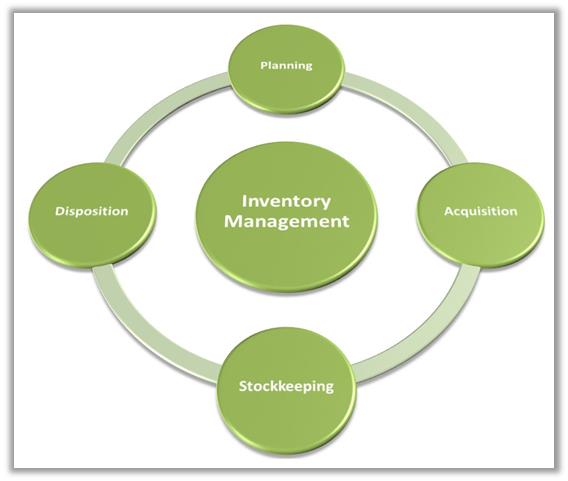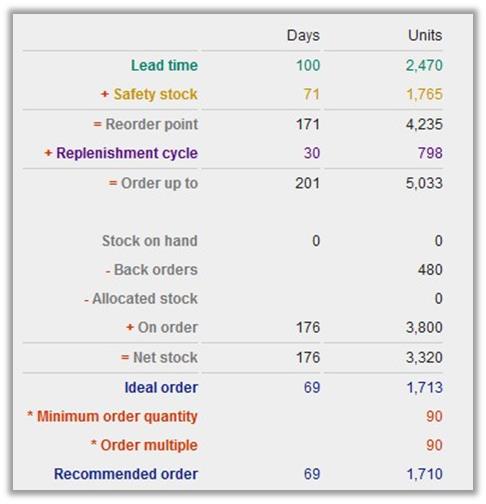I was speaking with a client recently, and their director of procurement asked me something along these lines: "Is there any way that our ERP system can set our inventory minimums, maximums and reorder points?"
This question brought to the fore a problem we run across far too frequently in trying to help our clients improve their own inventory performance, and smooth out the challenges they face across their supply chains.
Missing the fundamentals
Any good inventory management system is intended to help you with four fundamental things:
- Planning
- Acquisition (purchasing)
- Stockkeeping (receiving, inventory control, accounting)
- Disposition (shipping, et al).
The question that our client raised related to the planning portion of inventory and supply chain managem ent.
ent.
The key components found under planning are these:
- Inventory policy
- Inventory planning
- Forecasting.
The most fundamental of these three components is inventory policy management. It is impossible to perform effectively any of the other functions in the inventory planning realm until inventory policies have been determined. Yet, here was a client that had been heavily involved and heavily invested in inventory for a number of years, still uncertain about what policies should surround their inventory.
By inventory policies (in this case), we mean those rules that will determine…
- What products should be stocked? What products should not be stocked?
- Where (which warehouse and bin) should the stocks of each product be held?
- Who is responsible (from a planning and execution perspective) each given product or product line?
- When should each product be ordered to satisfy demand?
- At what level should each SKU-Location be stocked?
- Why were these stocking levels chosen for each SKU-Location?
Lacking a theoretical framework for policy setting
Because we work mainly with small to mid-sized business enterprises—ranging from about $10 million to $500 million in annual revenues—most of our client businesses grew organically from entrepreneurial roots. The teams time, energy and money has been focused on being successful through a "git 'er done!" attitude.
In such organizations, more questions are asked about "how" than about "why." We frequently discover that inventory levels are set in the warehouses based on who complained the loudest or last. If it was accounting and finance who complained last, there's a good chance that inventory levels will be falling. If, on the other hand, it was sales and marketing, or the CEO, complaining about lost sales due to out-of-stocks, you can be pretty sure that inventory levels will be on the increase.
How much of a decrease or increase in inventory levels will occur in organizations like this depends on many factors—like how loud, how frequently, or who yelled  last—but almost never upon any considered inventory management policy governing SKU-Locations (SKULs).
last—but almost never upon any considered inventory management policy governing SKU-Locations (SKULs).
The reason there are few—or, no—inventory policies governing SKULs in organizations like this mostly due to the fact that no one in the organization is trained or equipped to set such policies, and they have no theoretical basis for determining what such policies should look like.
A quick short-cut to effective policy setting and management
Unless your small to mid-sized business happens to have an on-staff statistician and a full-time inventory manager (with no other duties), determining what inventory policies should be and how the various policies should be applied to various SKULs can be a daunting task. Sometimes, it even appears to be an insurmountable task.
However, Sage Inventory Advisor (Twitter: @SageInvAdv) can lift that burden off your shoulders in about 24 hours and make life much easier.
Sage Inventor Advisor (SIA) safely extracts your data (typically, during an overnight process) regarding historical demand, historical purchase, open demand, open purchases, vendors, and more. On its secure servers, it carefully analyzes every SKUL, and does curve-fitting to determine which of its 15 different forecasting algorithms best applies to each. From that analysis, it calculates a day-by-day forecast for one replenishment cycle into the future for each SKUL.
Based on all it knows from its analysis, SIA next sets a "policy" for each SKUL. The policy includes:
- Lead Time: What is the SKUL's lead-time, and how many units are needed to cover this lead time projected into the future?
- Safety Stock: Based on a large number of factors, including both demand variability and supply-side risk, SIA calculates the number of days of demand coverage that should be held in safety stock.
- Reorder Point: = Safety Stock quantity + Lead Time quantity
- Replenishment Cycle: In SIA, the replenishment cycle may be calculated or predetermined based on factors such as Minimum Order Quantity.
- Order Up To = Reorder Point (quantity) + Replenishment Cycle (quantity) = Maximum Stock Level
Bingo!
Overnight, without a resident statistician and without a full-time inventory management secretary, every SKUL managed by SIA has an effective policy assignment based on proven industry best practices.
Even better
Even better, none of this is static!
Twenty-four hours later, with the next upload of data, SIA will have new information about demand, supply, vendor performance, and more. Appropriate changes will be made to keep each SKUL's policy coordinated and moving toward the optimization at the target inventory level.
Imagine what it would cost to pay for help such as this to work in your back-office or warehouse.
Just an example
We are using Sage Inventory Advisor here by way of example. Are there other products that can help you in the same or similar ways? Certainly there are. We would invite you to investigate them. Watch a Sage Inventory Advisor demo to learn more.


